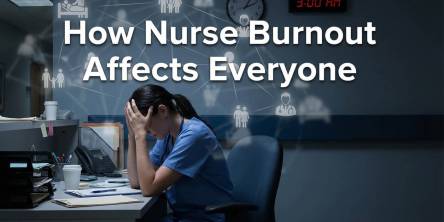How Collaborative Healthcare Strengthens Patient Care

Collaboration in healthcare isn't just beneficial; it's crucial for improving patient outcomes. By working together, professionals from various disciplines can provide comprehensive care. This ensures that patients receive the right diagnosis, treatment, and follow-up. Let's explore how collaborative efforts, particularly between physicians and nurse practitioners, are revolutionizing the healthcare landscape.
Understanding the Role of Nurse Practitioners
Nurse practitioners (NPs) play a vital role in the healthcare system. They are registered nurses with advanced degrees and training, allowing them to provide high-quality care. Their responsibilities include diagnosing and treating illnesses, managing chronic conditions, and prescribing medications. NPs are instrumental in expanding access to healthcare, especially in underserved areas.
Key Functions of Nurse Practitioners
- Primary care delivery: NPs often serve as primary care providers, offering services similar to those of physicians.
- Patient education: They educate patients about their health, encouraging preventive measures and healthy lifestyles.
- Chronic disease management: NPs manage long-term conditions like diabetes and hypertension, with a focus on continuous monitoring and patient support.
Read more: The Importance of Market Research in the Healthcare Industry
The Impact of Physician-NP Collaboration
The collaboration between physicians and nurse practitioners enhances the quality of care. By sharing their expertise, these professionals can address complex cases more effectively, leading to better patient outcomes.
Benefits of Collaboration
- Expanded access to care: Collaborative teams can meet the needs of more patients, reducing wait times and improving service delivery.
- Holistic patient care: Combining the skills of physicians and NPs ensures comprehensive treatment approaches.
- Improved decision making: Diverse perspectives lead to more informed decisions, benefiting patient care.
- Increased satisfaction: Patients often report higher satisfaction when treated by a collaborative team.
Collaborative Models in Practice
Several models illustrate effective collaboration in healthcare settings:
- Team-based approach: Physicians and NPs work alongside other healthcare professionals to provide coordinated care.
- Shared care management: Jointly managing patient cases ensures that each team member's expertise is utilized.
- Consultative services: NPs might consult physicians when they encounter unique or complex cases, facilitating better outcomes.
The Role of Technology in Enhancing Collaboration
Technology is a key enabler of collaboration in healthcare.
Effective Communication
Digital tools like electronic health records (EHRs) and telehealth platforms streamline communication. These tools allow seamless coordination, ensuring every team member has access to up-to-date patient information.
Remote Consultations
Telemedicine enables remote collaboration and consultations, particularly beneficial in rural or underserved areas. Nurse practitioners can consult with specialists without geographical constraints, enhancing the level of care they can provide.
Patient Monitoring
Technological advancements in patient monitoring systems allow for real-time data tracking. NPs can collaborate with physicians to make data-driven decisions, improving patient outcomes.
Addressing Challenges in Physician-NP Collaboration
Despite its benefits, collaboration can face challenges that require attention.
Overcoming Barriers
- Regulatory hurdles: Scope of practice laws vary across regions, sometimes limiting the functions NPs can perform.
- Interprofessional tension: Differences in training backgrounds can lead to misunderstandings or conflicts within the team.
- Communication gaps: Ensuring consistent information flow is critical to maintaining effective collaboration.
Strategies for Success
To overcome these challenges, healthcare institutions can implement the following strategies:
- Standardize roles: Clearly defining responsibilities prevents overlaps and ensures everyone understands their role.
- Education and training: Joint training sessions can bridge the gap between disciplines, fostering mutual respect and understanding.
- Foster a collaborative culture: Encouraging a culture of openness and mutual support enhances team dynamics.
An example of beneficial partnership is when a collaborative physician for nurse practitioner can leverage their relationship to provide enhanced patient care.
The Path Forward in Collaborative Healthcare
As the healthcare landscape evolves, the collaboration between physicians and nurse practitioners will continue to grow in importance. Through teamwork, open communication, and technological support, these professionals can transform healthcare delivery. By addressing challenges and nurturing effective partnerships, they can ensure that patients receive the best possible care. Collaborative healthcare is more than a trend; it's the future of medicine.
Similar Articles
Discover the benefits, challenges, and future of locum medical jobs. Learn how locum recruitment agencies support flexible, diverse career opportunities for healthcare professionals seeking dynamic work environments.
Burnout in the healthcare environment is a significant and growing crisis.
NAD+ therapy restores cellular energy, enhances metabolism, and promotes anti-aging by supporting DNA repair and improved overall vitality.
Seasonal Affective Disorder (SAD) is a type of depression linked to seasonal changes, most commonly seen during the late fall and winter months when sunlight exposure decreases
Enhance sleep comfort and support with a mattress topper queen. Discover how the right topper improves pressure relief, temperature control, and rest.
If your mind refuses to be quiet the moment your head touches the pillow, welcome to the club. Overthinking at night has silently become nearly synonymous with modern forms of insomnia.
Discover how longevity clinics use key biomarkers to assess ageing, improve health, and guide personalized wellness strategies for a longer, healthier life.
Halitosis, sometimes known as foul breath, affects millions of individuals worldwide and can cause humiliation, influencing everyday interactions and confidence.
In the modern world, maintaining good health often feels like a constant challenge. Between busy lifestyles, sedentary habits, and lack of motivation, many people find it difficult to stay consistent with exercise, diet, or wellness practices.









